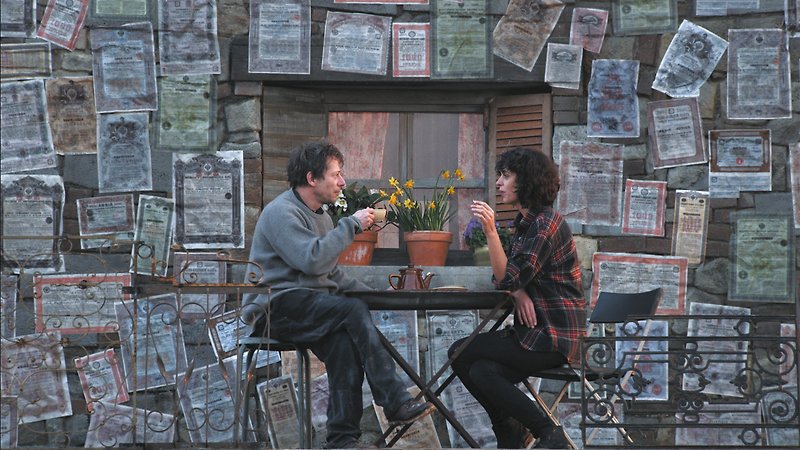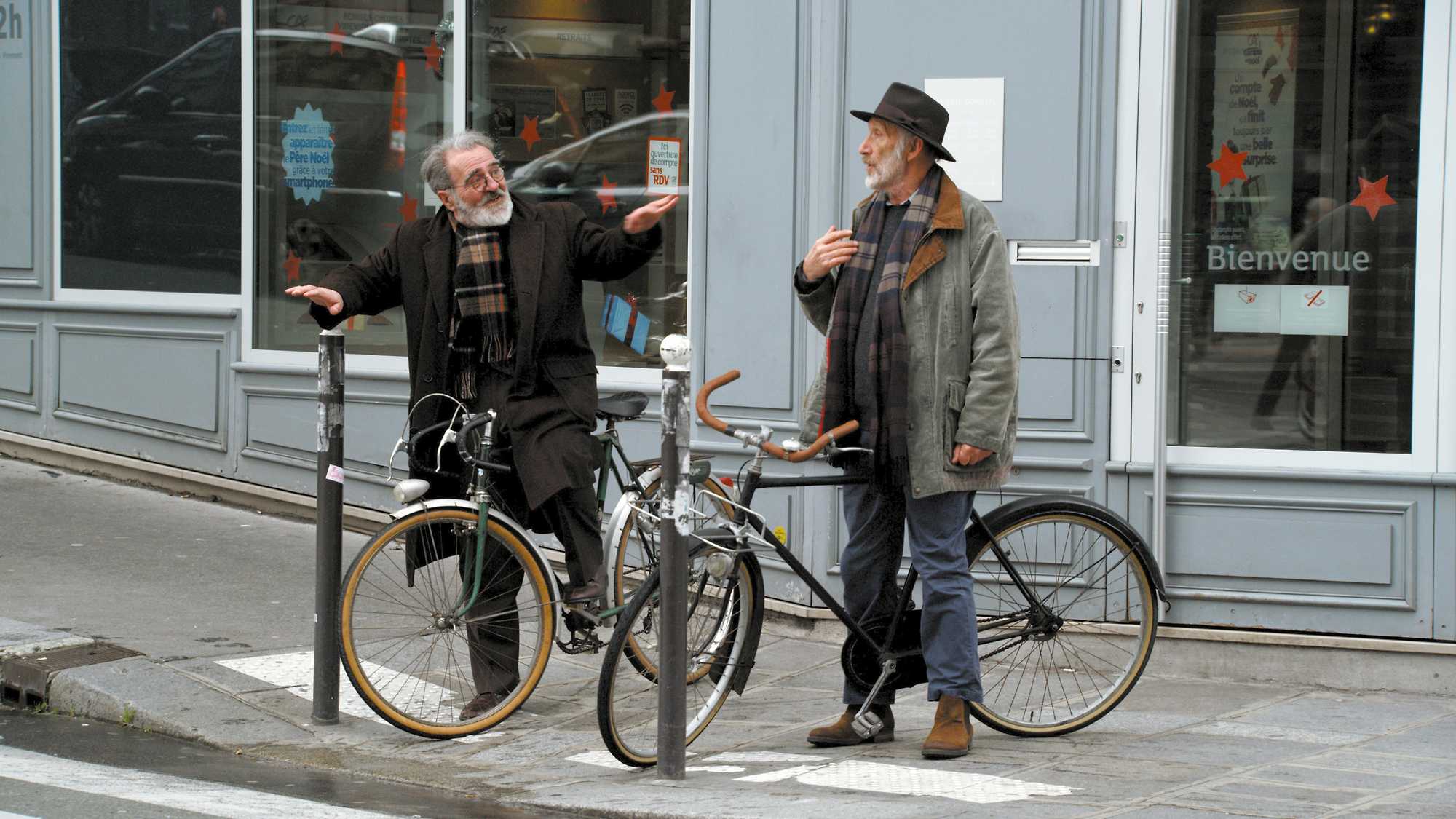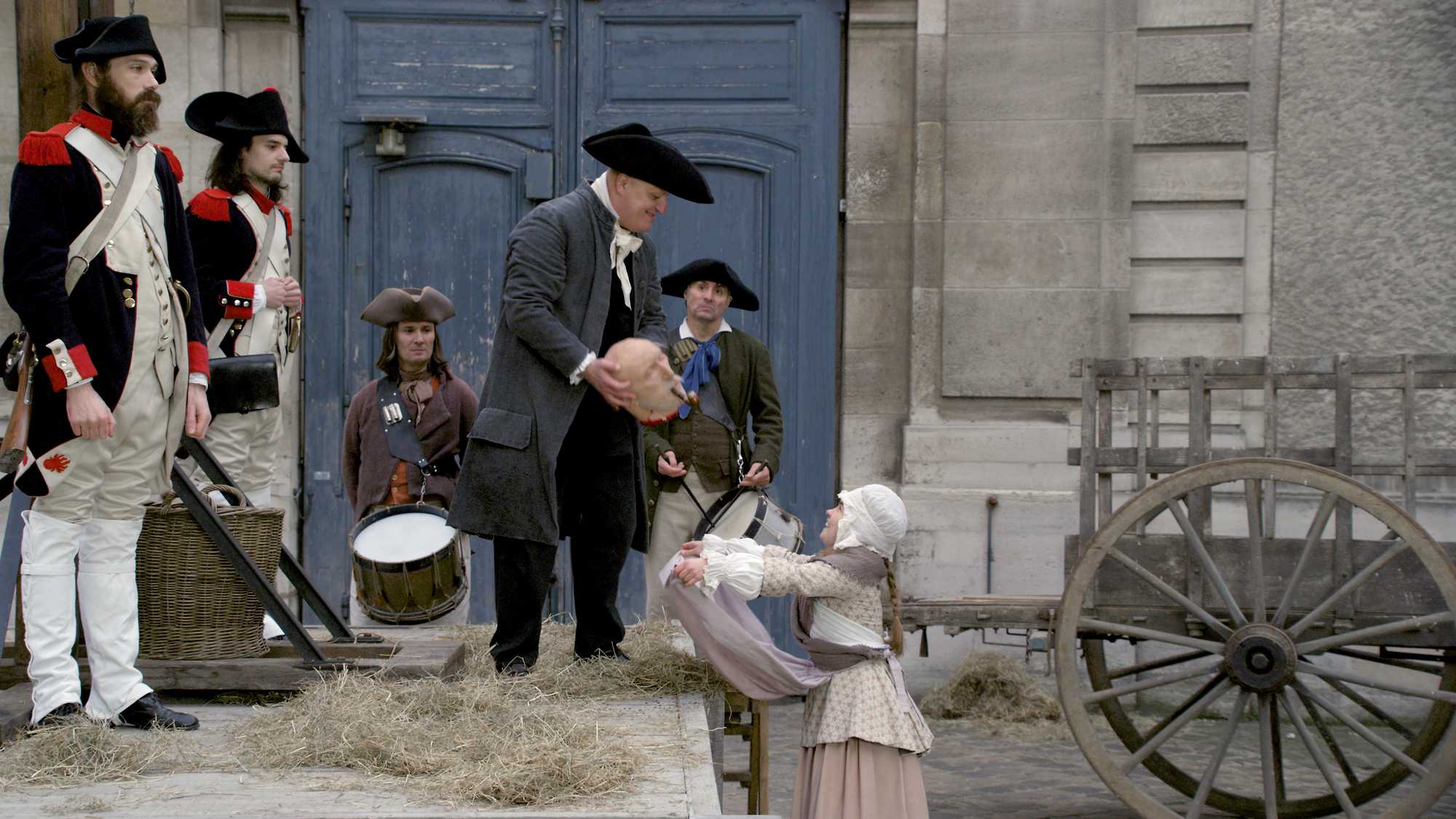In a similar style to Jacques Tati, this elaborate and nostalgic comic portrait of the denizens of a Paris suburb favours visual gags over dialogue and the beguiling unravelling of random connections over plot.




Sauntering gracefully into his ninth decade, Georgian-French writer-director Otar Iosseliani delivers another of his whimsically droll confections.
Screened as part of NZIFF 2016
Winter Song 2015
Chant d’hiver
The great Georgian master Otar Iosseliani approaches his seventh decade as a filmmaker with this wonderfully intricate, light as air, subtly political shaggy dog story. After a couple of abrupt and radical shifts in setting (revolutionary France, an unnamed contemporary warzone), the film settles down in a Paris suburb where a large and colourful cast of characters interact in deceptively casual ways.
The film unfolds as a series of wry sketches – deft street crimes staged with the panache of an MGM musical, the mysterious appearance of a door in a wall leading to a paradisal garden, the surreal sight gag of a steamroller victim being slid under his wife’s door – that play on ideas of friendship and enmity, oppression and defiance. These vignettes are connected by the haphazardly crossing paths of the arrondissement’s inhabitants (among them Mathieu Amalric, a Iosseliani discovery way back in 1984, and veteran French comic/director Pierre Étaix), or the shared happenstance of a sudden strong wind, say, and the movement of the film often resembles the sideways shifts of a dream.
In the final half hour, however, all manner of themes, threads and images are unexpectedly and ingeniously united. Iosseliani stages his scenes with the grace, subtlety and comic timing of Jacques Tati, and with a similar avoidance of excess dialogue. His sympathetic but arm’s-length observation of a wide variety of types muddling through a sometimes absurd life in their own idiosyncratic ways gradually accumulates emotional resonance and evolves into a warm portrait of a ramshackle community. — AL